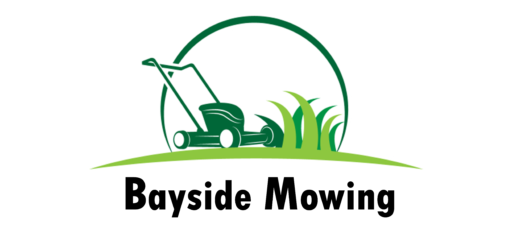Drain flies, also known as moth flies, can quickly transform your once peaceful bathing experience into a distressing encounter. These minute, moth-like insects flourish in stagnant water and decomposing organic material found in drains, making them a prevalent nuisance in both kitchens and bathrooms. Their unwelcome presence not only disrupts your comfort but also serves as a warning sign of potential plumbing issues that may need immediate attention. Addressing these nuisances efficiently is crucial for maintaining a clean and healthy living space, ultimately reducing the risk of health problems tied to infestations. By understanding their behaviors and preferred habitats, you can take proactive measures to eliminate them, ensuring a hygienic and enjoyable environment.
Follow This Detailed 6-Step DIY Plan to Permanently Eliminate Drain Flies
1. Thoroughly Clean Your Drains to Remove Breeding Grounds for Drain Flies
Begin your fight against drain flies by systematically scrubbing the inner walls of your drains using a specialized drain brush. This essential first step is crucial as it helps eliminate the organic build-up that creates an inviting breeding ground for these pests. Focus on the edges and hard-to-reach spots where debris tends to accumulate. By ensuring these areas are immaculately clean, you significantly reduce the likelihood of future infestations while enhancing drainage efficiency. Regular maintenance is vital, not only to deter drain flies but also to contribute to your plumbing system's overall well-being, promoting its longevity and functionality, and ensuring a comfortable living environment.
2. Flush Your Drains with Boiling Water to Remove Debris and Larvae
Next, pour boiling water down the drain to dislodge any stubborn debris and larvae that may be hiding. This method is not only effective for cleaning but also sanitizes the drain, helping to eliminate any potential breeding sources. For the best results, repeat this hot water flushing daily for several days to achieve a comprehensive cleansing effect and to eradicate any remaining organic material that could attract drain flies. This easy yet powerful step can significantly lower the population of these pests and contribute to a healthier plumbing system, leading to a more pleasant home environment.
3. Create a Powerful Vinegar and Baking Soda Cleaning Solution
Mix half a cup of baking soda with half a cup of vinegar and pour this potent mixture into the drain. Allow it to sit undisturbed for several hours or even overnight to maximize the effectiveness of the chemical reaction. The fizzing action generated by this combination will aid in breaking down and dislodging stubborn organic matter. Finally, flush the drain with hot water the following morning to remove any residues left behind. This natural cleaning method is not only effective but also eco-friendly, making it a fantastic alternative to harsh chemicals that could harm your plumbing.
4. Utilize a Strong Enzyme-Based Commercial Drain Cleaner for Effective Results
Consider opting for an enzyme-based cleaner specifically formulated to break down organic material and eliminate drain flies. Ensure you adhere to the manufacturer’s guidelines and apply the cleaner directly to the affected drains. These specialized products are safe for your plumbing and environmentally friendly, providing a powerful solution to stubborn organic build-up that attracts these bothersome insects. Regular use of enzyme cleaners can not only prevent future infestations but also keep your drains functioning optimally, contributing to a cleaner and healthier home atmosphere.
5. Construct a Simple Yet Effective DIY Fly Trap to Capture Adult Drain Flies
To effectively capture adult flies, create an easy yet efficient trap using a bowl filled with equal parts of vinegar, sugar, and water. Adding a few drops of dish soap will lower the surface tension, making it easier for the flies to become trapped. Place this bowl near the infested drain area to attract and capture any lingering adult flies. This simple DIY trap serves as a helpful tool to monitor and reduce the adult population of drain flies in your home, proving to be an invaluable component of your pest control strategy.
6. Establish a Consistent Cleaning Routine to Prevent Re-infestation of Drain Flies
Remember that consistency is critical when it comes to eliminating drain flies. Repeat these cleaning steps every few days to ensure that all larvae and adult flies are thoroughly eradicated. Stay vigilant regarding your drains for any signs of recurring activity. Regular cleaning not only helps to prevent re-infestation but also supports the overall health of your plumbing system, ensuring a clean and pest-free environment that promotes comfort and peace of mind.
Recognizing When to Seek Professional Plumbing Assistance for Persistent Drain Fly Problems
While the DIY methods outlined above can be highly effective in addressing drain fly issues, ongoing problems may indicate more serious underlying plumbing concerns. If you continue to spot drain flies despite thorough cleaning or notice signs of hidden water leaks or blocked drains, it may be time to seek the expertise of a professional plumber. These trained specialists can conduct a comprehensive deep cleaning of your plumbing system and perform thorough inspections to uncover any underlying issues. This proactive approach ensures a long-term resolution to the problem, ultimately saving you from future headaches and costly repairs.
Get Expert Help for Your Drain Fly Challenges Today
Drain flies are a common yet manageable issue that many homeowners face. By identifying the source of the problem, implementing effective cleaning methods, and maintaining your plumbing system, you can keep your home or business free from these unwelcome pests. However, if the problem persists despite your best efforts, do not hesitate to contact Jet Plus Plumbing for professional assistance. With expert support and regular maintenance, you can ensure a clean, pest-free environment that fosters hygiene, comfort, and peace of mind.
Your Questions Answered: Common Inquiries About Drain Flies
Understanding Drain Flies: What Are They and Why Do They Infest My Home?
Drain flies, belonging to the Psychodidae family, are tiny insects frequently found in areas with stagnant water and organic debris. Often called moth flies due to their fuzzy appearance, these insects have wings covered in hair-like scales and typically measure about 2-5 mm in size. They are usually found in shades ranging from grey to black or tan. While drain flies do not bite and pose no direct harm to humans, their presence often indicates clogged or dirty drains, which, if ignored, could lead to more significant plumbing problems. These pests thrive in moist environments such as bathroom sinks, kitchen drains, and floor drains, where they lay eggs and feed on decaying organic material. Despite their harmless nature, their rapid reproduction and potential to spread bacteria make them unwelcome in any home or business.
How Can You Confirm the Presence of Drain Flies in Your Space?
Before addressing the issue, it's essential to confirm that you are dealing with drain flies for effective management. These small, moth-like insects measure approximately 2-5 mm and have fuzzy wings, typically appearing grey or tan in color. Most active during the evening hours, they are often found near drains, sinks, or other moist areas. Signs of an infestation include flies buzzing around drains, stagnant water, or damp surfaces, often accompanied by a musty odor. If you suspect their presence but are uncertain, a simple test involves placing sticky tape (sticky side down) over the suspected drain overnight; if flies are nearby, they will adhere to the tape, confirming their presence and allowing you to take the necessary action.
Understanding the Causes of Drain Fly Infestations and Effective Prevention Strategies
Drain flies thrive in environments characterized by stagnant water and organic debris. Common causes include clogged drains where grease, soap scum, or food particles accumulate, creating an ideal breeding ground. Additionally, standing water from leaky pipes or unused drains can provide an attractive habitat for these pests, allowing them to flourish. Furthermore, decaying organic matter within drains serves as a primary food source for them. By promptly addressing these underlying issues, you can effectively eliminate the flies and prevent future infestations, ensuring your plumbing remains in optimal condition and your living space stays healthy.
Exploring the Lifecycle of Drain Flies and Its Impact on Infestation
Understanding the lifecycle of drain flies is essential for effectively targeting their elimination. These insects undergo a complete metamorphosis comprising four distinct stages: egg, larva, pupa, and adult. Female drain flies lay their eggs in moist environments rich in organic matter, such as clogged drains. The eggs hatch into larvae within 32 to 48 hours, which then feed on the organic build-up for 9 to 15 days before forming a cocoon-like pupa. After 1 to 2 days, adult flies emerge, ready to reproduce. This brief lifecycle allows them to multiply rapidly, making prompt action crucial to controlling their population and preventing extensive infestations in your home or business.
Health Risks Associated with Drain Flies and Effective Mitigation Strategies
While drain flies are non-biting and do not inflict direct harm on humans, they can still pose certain health risks. These insects often breed in unsanitary conditions, such as drains clogged with decaying organic material. Consequently, they can carry and spread bacteria or pathogens that may contaminate surfaces, food, or water, which is particularly concerning in kitchens, bathrooms, and food preparation areas. Additionally, their presence can exacerbate respiratory issues for individuals sensitive to allergens. Maintaining clean drains and addressing infestations promptly can significantly mitigate these potential health risks, ensuring a safe and healthy environment for you and your family.
How to Get Rid of Drain Flies
The Article: Get Rid of Drain Flies Effectively and Easily first appeared on https://writebuff.com
The Article Effectively Get Rid of Drain Flies with Simple Solutions Was Found On https://limitsofstrategy.com
References:
Effectively Get Rid of Drain Flies with Simple Solutions


Your exploration of drain flies as a significant nuisance resonates deeply, especially as I reflect on my own encounters with these pesky intruders. It’s interesting to note how often we overlook the interplay between our everyday living environments and the microorganisms that might thrive in them. As someone who has dealt with drain flies before, I’ve come to understand that their presence is not just an annoyance but a tangible indication of underlying issues. It’s almost like they serve as tiny, fluttering messengers warning us about potential problems lurking beneath the surface—quite literally in this case.
Your reflections add a layer of depth to the conversation about drain flies that is often missing in more technical discussions. It’s fascinating to consider how these little creatures serve as indicators of what’s happening in our homes. When we spot a drain fly fluttering around, it’s easy to feel a wave of annoyance, especially if we’re trying to enjoy a meal or relax in our living space. Yet, as you’ve pointed out, their presence nudges us toward a deeper understanding of our environment and the health of our home.
“Absolutely, your insight into the role of drain flies as indicators of deeper issues is spot on! If you’re looking for effective solutions to keep them at bay and maintain a healthier living space, check out this helpful guide.”
https://baysidemowing.com.au/DigestiveHealth